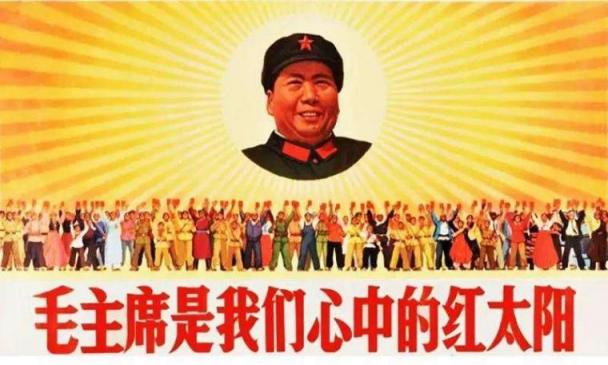2009年,一场完美的金融风暴!
货币战争:奥巴马夸下的刺激经济的海口至少需要2.5万亿美元,拯救商业银行至少需要2-3万亿美元,总额将高达5万亿美元左右。我们认为这是一个不可能完成的任务。美国国债市场2009年存在着崩盘的危险!随之而来的要么是长期利率飙升,要么是恶性通货膨胀。美国要守住美元体系,就必然承受利率猛涨,从而导致利率火山爆发,进入危机的第三阶段。或者保住利率稳定,则必须承受恶性通胀的后果,结果可能导致美元地位危机,从而直接进入危机的第四阶段,美元冰河期。天下没有免费的午餐,当然如果美国使用战争手段,情况可能会有所不同。
(译者:大头姗)
尽管一直在持续的银行危机,全球政府终于将控制权掌握在手中是共同的主题。虽然程度深而且持续时间长的经济衰退不可避免,但是萧条看上去可以转化。Roubinis如此说。19世纪30年代的相同决策失误已经被重复了。美联储扩张主义的政策已经成功的显著改变了收益率曲线。政府现在正在掌权,不是么?
昨日FT专栏Martin Wolf让我们停下来思考。它举了美国刺激计划方案的问题。
上周,总统当选人奥巴马正式宣布他的美国恢复计划和再投资计划。其标题经过了慎重选择,令人吃惊的是,对于奥巴马来叔,似乎其他国家政策对美国的命运没有任何的影响。他也说,似乎一个大的财政刺激就足以恢复经济的繁荣。如果这就是他所认为,那奥巴马就会遇到打击。他面临的困难要比这些程度更深而且更全球性。
伊夫奥尔特史密斯总结Wolf的观点说
如果我有这个权利, “被需要”的刺激计划是10 % (充分就业赤字+ 7 % ,或在未来两年内,每年17%。奥巴马提供的未来两年5 %,或2.5 %每年,加上基准的8.3 % ,共计10.7 % 。 )
因此,去获得我们需要(如果您同意这类计算逻辑)是一个额外的6.3 % ,即占国内生产总值的a % 。请记住,奥巴马的计划是大约2.5 %的速度,6.3/2.5 = 2.5倍。
如果你相信数学,奥巴马的计划会需要2.5倍的多资本才能完成他的预算。这是在你进入具体细节之前结果,如“减税可能比其他措施的效果小” 。
一个更大的刺激计划—即使注定是戏剧性的—在这点上依然可能。是可以获得的。
OECD的主要指标正指出中国GDP增长出现一个完全而迅速的崩溃。爱德华制作了2个表,用了另一个不包含OECD计算方法的指标---发电量。
如果中国经济崩溃,或者放缓速度显著,那其巨大外汇储备存在的理由---好比一个抑制国内通货膨胀的防御措施---将会蒸发消失,同样中国的美国财政部控股也会消失,或者中国人民币可能贬值。
无论哪种情况出现,美国将陷入困境之中。国债价格可能崩溃(不过鉴于目前新的银行倒闭的担忧,它会在一个明显反弹之后发生),如果这种情况发生,美联储量化宽松政策将给政府留下巨大烂摊子。任何刺激经济的方案也会如此。
可以想象这将带来唯一核心的选择:美元贬值。
中国为什么会让其发生?
当然,当局者20世纪30年代已经受到了教训,我们可以依靠他们做正确的事情?这要看代价是什么了。如果代价是推翻中国共产党,那人民币贬值毫无疑毫无疑问。就如经济学家近期指出的,经济学家和银行家恳求HOOVER总统不签署1930年的斯幕特协议---霍利关税法(译者:《斯姆特-霍利关税法》:即《Smoot-Hawley Tariff Act》,该法案旨在建立高关税壁垒以保护美国市场,被后来的学者认为是引发上世纪30年代全球经济大萧条的导火索)
纽约时报:拯救银行意味着国有化
Rescue of Banks Hints at Nationalization
http://currencywar.blog.hexun.com/28454948_d.html
http://www.nytimes.com/2009/01/16/business/16banking.html?pagewanted=1&_r=3&ref=business
货币战争:鲍尔森方案是金钱换股份,伯南克方案是CDS置换。鲍尔森方案简单明了,但随着花旗和美国银行股价暴跌,实际上已不可行,即全部国有化银行所注入的资金已不足挽救这两大巨头自有资本金的损失。伯南克方案抓住了CDS担保失效是导致银行资金短缺的要害,但代价是财政部将成为两巨头最大的CDS担保者以置换对冲基金和保险公司,其核心是拯救对冲基金而牺牲纳税人的利益。两巨头或者更多的5巨头的总损失规模将在2-3万亿美元之间,纳税人将成为主要买单者。超大规模的国债发行已不可避免,而美国国债持有人也将与美国纳税人一起承受严重的购买力缩水的损失。2009年下半年,美国国债市场将面临一场严峻考验。
我国很多学者天真地认为奥巴马政府一旦全力拯救银行,一切问题都将迎刃而解,他们以为美国政府能够随意印钱,市场则会照单全收。2008年美国财政赤字高达4800亿美元,而今年在不考虑商业银行救助的情况下已达到惊世骇俗的1.2万亿美元,如果把银行损失所导致的政府救助加入,2009年美国国债发行量将达到3万亿美元,这还不算每年的国债利息支出的5000亿。这个数字是正常年份的5倍以上,美国总储蓄率接近0,国内金融机构现金严重短缺,这就是银行需要救助的主要原因,因此要消化如此惊人的国债只能依赖外国投资人,但目前的情况是各国都在减持美国国债,只有中国例外。即使中国出于种种原因想帮美国,但其胃口绝对消化不了这么大的量。最后只有美联储自己大量吃进,而这就是超大规模基础货币增发,恶性通胀将难以避免。
(译者:大头姗)
华盛顿—去年夏天,在联邦和财政部做出了一个又一个政府救助金融机构的举措后,他们承受巨大的痛苦来避免做任何影响银行的国有化。
周二,在巴尔迪麽的法院外有抗议银行无抵押权的拍卖行为。拍卖活动发生在抗议之后。当银行开始挣扎时,消费者和房主也是如此。
他们或许无法在拥有奢侈品。当国家2个最大的银行屈服于即将到来的新一轮巨大损失时,奥巴马的团队和美联储正在处理那些被称为“大到不能倒闭”的银行的问题,而且他们如今因经济下滑致使他们资本的破坏而无法正常发挥功能。
尤其是花旗银行,它的损失非常大,以至于从数学角度来说,只有通过政府注入足够多的资金而获得大部分股份或者至少取代现有的股东才能够解救它。
奥巴马对于7000亿救世计划的剩下那部分的使用方案中,要求政府在银行重大事件中占据更加重要的地位,包括从他们支付给股东的分红到支付给高级主管的奖金。
苏格兰皇家银行分析师说:“美国还没看到,从杰克逊关闭美国第二大国家银行开始,国家就已经踏上了(银行国家化)的道路,我们将回到政府控制银行体系的时代。
周四,将近于1200亿用来救助美国银行的资金------包括注入资本和吸收损失-----同时,11月份的3000亿的花旗银行救助资金,都代表着用来为银行提供资本的金融行动并表现出现对银行资本的控制。
财政部和美联储官员通过构建与保险计划相当大的的救助银行最大毒性资产行动来完成这个计谋。
政府并没有像财政部门那样通过资本注入,投资千亿纳税人的资金来购买银行的优先股去救助它们,而是在根本上将银行从威胁资产中解放出来。
分析师说新救助方法的问题是,它很可能遮盖住纳税人所承担的风险。如果政府担保的证券变得一文不值,保险金的成本可能比财政部第一时间以现金救助银行所需要的花费多得多。
另一分析师说,此种方法掩盖住了政府已经为花旗银行大股东的事实。“没有其他任何人会投资他们,我们已经拥有它们了”
博南克在周一概述了奥巴马新管理团队对于救助银行方案的几点要素。
博南克警告说,如果有任何恢复当前瘫痪的信贷市场的希望,联邦政府除了将更多的钱注入到银行中或金融机构,别无它选。
众所周知,TARP救援计划已经激怒了两党的国会议员,这些人抱怨说美国财政部长鲍尔森已经向小型银行注入资金而不要求义务性的回报。奥巴马和它的高级经济顾问确信的说:对于阻止更大的金融崩溃,支撑银行非常重要,而且提供书面保证会解决议员们的最大抱怨。
但是博南克提出了一系列的在今后几个月中处理银行问题的选择,所有这些选择都体现出从布什政府最初设想的重要转变。
鲍尔森坚持认为政府只能投资在健康的银行中,也许这些银行有些会接管其竞争对手。财政部将投资纳税人的钱来换取优先股,这将支付定期股息并获得认证股权,而政府可以通过股价的上涨赚取利润。
相比之下,博南克提出了各种“剥离问题资产“的方法,这些问题资产包从不良贷款到住房抵押贷款证券,是人们不会在任何价格购买的。
博南克的做法包括保护银行资产,是在美国银行和花旗银行救助计划中核心的问题。11月份花旗银行获得了救助计划,但是上周五的报告预计,它的损失可能突破100亿美元。
在这两项交易中,联邦政府设立了一个能限制银行损失其数十亿美元最差资产的复杂安排。
花期集团在11月份的交易中获得了3000亿美元的资产。花期集团同意承担首个290亿美元的损失。美国财政部同意承担新一轮的高达50亿美元的损失,而联邦储蓄保险公司同意承担第三轮高达100亿美元的损失。美联储则同意以低利率借给花旗银行钱。
作为第二个选择。博南克和其他联邦官员提出将银行的受损资产放入一个新的独立的“坏银行“之中。其影响可能与政府提供保证相同:政府可能将自己从拨出更多的损失准备金的需要中解脱出来。
政府“包裹”和政府支持的“坏银行”具有保护银行普通股股东被政府取代的优点。
相比之下,不是政府最先的银行重新资本化方法----注资来换取优先股股东和可转换为普通股的认股权证------有排挤普通股的效应。这是因为,在银行能够在停止支付优先股股息之前,任何损失都将首先消除普通股股东。
“TARP的一个问题是政府不希望拥有银行,如果你受损失,普通股就变少。我们所作的是希望保护一些资产,这是防止普通股股东的消失并提高普通股股价的方法。
但是越来越多的分析师警告说,此做法可能过于聪明,因其为决策者提供了太多掩饰银行真正问题和风险方法。
“我们所拥有的是一个奇怪的,影子下的国有化进程。政府并不能也不应该想拥有银行所有权。但是如果他们不得不陷入这个局面,他们必须解决这个情况。于此,你所拥有的是一个被公认的具有巨大的多元化的金融服务行业损失,并面临在经营过程中的每个方面都存在损的情况。解决这个问题没有任何简单的方法。”
The perfect storm
Posted by Sam Jones on Jan 15 16:28.
A common theme is that, notwithstanding the ongoing banking crisis, the world’s governments have finally got a grip on the task in hand. Although a deep and protracted recession looks all but unavoidable, a depression seems averted - even Roubini says so. The same policy blunders made in the 1930s have not been repeated. The Fed’s expansionist policies have already succeeded in dramatically shifting the yield curve. Governments are in control.
Aren’t they?
Martin Wolf’s column in yesterday’s FT gave us pause for thought. Wolf took issue with the US stimulus package on offer.
Last week, President-elect Barack Obama duly unveiled his American recovery and reinvestment plan. Its title was aptly chosen, for Mr Obama spoke, astonishingly, as if the policies of the rest of the world had no bearing on the fate of the US. He spoke, too, as if a large fiscal stimulus would be enough to restore prosperity. If that is what he believes, Mr Obama is in for a shock. The difficulties he confronts are much deeper and more global than that.
Yves Smith over at Naked Capitalism takes up Wolf’s argument and calculates…
So if I have this right, “needed” stimulus is the 10% (full employment” deficit + 7%, or 17% in each of the next two years. What Obama is delivering is 5% over two years, or 2.5% a year, plus a baseline of 8.3%, for a total of 10.7%.
So to get where we need to get (if you buy the logic of this sort of exercise) is an additional 6.3% PER ANNUM deficit as a % of GDP. Remember, Obama’s plan is roughly 2.5% per year. 6.3/2.5= 2.5 times.
Read that again, If you believe the math, Obama’s program would need to be 2.5 times bigger to live up to its billing. And that is before you get into details like “tax cuts are likely to be less effective than other measures”.
But that isn’t the half of it. A larger stimulus - though certainly dramatic - is still assumed at this point to be a possibility. Something achievable.
The below graph is from Albert Edwards at Societe Generale. It’s frightening (click to enlarge):
The OECD’s leading indicators are pointing to a total and swift collapse in Chinese GDP growth. Edwards produces two more graphs, using another indicator not included in the OECD’s calculations - electric power output.
And the relationship between electric power output and GDP:
If the Chinese economy collapses, or even slows dramatically, then the raison d’etre for the country’s huge FX reserves - as a sterilisation measure to dampen domestic inflation - will evaporate. With that, so will China’s US Treasury holdings. Or alternatively the Chinese could devalue the yuan.
Either way, the US will be in trouble. Treasury prices could collapse (although given the current renewed banking collapse fears, not before a significant rally has occured) and if that happens, the Fed’s yield-lowering credit easing policies will be left in tatters. As will any plans for economic stimulus packages. Hypothetically that would leave just the nuclear option: devaluing the dollar.
Why would the Chinese let that happen?
…surely the authorities have learnt the lessons of the 1930s and we can rely on them to do the right thing? It depends what the alternative is. A Yuan devaluation would undoubtedly be likely if the alternative was the overthrow of the Communist Party. As The Economist pointed out recently, economists and bankers begged President Hoover not to sign the 1930 Smoot- Hawley Tariff Act
This entry was posted by Sam Jones on Thursday, January 15th, 2009 at 16:28 and is filed under Capital markets. Tagged with china, Fed, Treasuries, Yuan.
纽约时报:拯救银行意味着国有化
Rescue of Banks Hints at Nationalization
WASHINGTON — Last fall, as Federal Reserve and Treasury Department officials rode to the rescue of one financial institution after another, they took great pains to avoid doing anything that smacked of nationalizing banks.
A protest Thursday against a foreclosure auction outside a Baltimore courthouse. The auction took place after the protesters left. As banks have struggled, so have customers like homeowners.
They may no longer have that luxury. With two of the nation’s largest banks buckling under yet another round of huge losses, the incoming administration of Barack Obama and the Federal Reserve are suddenly dealing with banks that are “too big to fail” and yet unable to function as the sinking economy erodes their capital.
Particularly in the case of Citigroup, the losses have become so large that they make it almost mathematically impossible for the government to inject enough capital without taking a majority stake or at least squeezing out existing shareholders.
And the new ground rules laid down by Mr. Obama’s top economic advisers for the second half of the $700 billion bailout fund, as explained in a letter submitted to Congress on Thursday, call for the government to play an increasing role in the major activities of the banks, from the dividends they pay to shareholders to the amount they can pay executives.
“We are down a path that this country has not seen since Andrew Jackson shut down the Second National Bank of the United States,” said Gerard Cassidy, a banking analyst at RBC Capital Markets. “We are going to go back to a time when the government controlled the banking system.”
The approximately $120 billion aid package on Thursday for Bank of America — including injections of capital and absorbed losses — as well as a $300 billion package in November for Citigroup both represented displays of financial gymnastics aimed at providing capital without appearing to take commanding equity stakes.
Treasury and Fed officials accomplished that trick by structuring the deals like insurance programs for big bundles of the banks’ most toxic assets.
Instead of investing tens of billions of taxpayer dollars in exchange for preferred shares in the banks, which has been the Treasury Department’s approach so far with its capital infusions, the government essentially liberated the banks from some of their most threatening assets.
The trouble with the new approach, analysts say, is that it is likely to conceal the amount of risk that taxpayers are taking on. If the government-guaranteed securities turn out to be worthless, the cost of the insurance would be much higher than if the Treasury Department had simply bailed out the banks with cash in the first place.
Christopher Whalen, a managing partner at Institutional Risk Analytics, said the approach also covers up the underlying reality that the government is already essentially the majority shareholder in Citigroup.
“There’s nobody else out there to invest in them,” Mr. Whalen said. “We already own them.”
Ben S. Bernanke, chairman of the Federal Reserve Board, outlined the elements of what could become the Obama administration’s new approach to bank rescues in a speech on Monday.
Speaking to the London School of Economics, but addressing American audiences as much as European ones, Mr. Bernanke warned that the federal government had no choice but to put more money into banks and other financial institutions if it had any hope of reviving the paralyzed credit markets.
Known officially as the Troubled Asset Relief Program, or TARP, the rescue program has infuriated lawmakers in both parties, who complain that Treasury Secretary Henry M. Paulson Jr. has doled out money to banks without demanding accountability in return. Mr. Obama and his top economic advisers convinced enough lawmakers that shoring up the banks was essential to preventing a broader financial collapse, and offered written assurances that they would address the lawmakers’ biggest complaints.
But Mr. Bernanke proposed an array of alternative approaches to dealing with the banks in the months ahead, and all of those options reflected a fundamental shift from the original assumptions of the Bush administration.
Mr. Paulson had insisted that the government would be investing only in healthy banks, some of which might take over sicker rivals. The Treasury would invest taxpayer dollars in exchange for preferred shares, which would pay a regular dividend and come with warrants that would allow the government to profit from increases in company stock prices.
By contrast, Mr. Bernanke proposed various ways to fence off the troubled assets, from nonperforming loans to mortgage-backed securities that investors had stopped buying at almost any price.
Mr. Bernanke’s options included guarantees for bank assets, which was at the heart of the rescue packages for Bank of America and Citigroup. Citigroup received its rescue package in November, but it is expected to report additional losses on Friday that could top $10 billion.
In both of those deals, the federal government set up a complicated arrangement that would limit the banks’ losses on hundreds of billions of dollars worth of their worst assets.
Citigroup’s deal in November covered $300 billion in assets. Citigroup agreed to absorb the first $29 billion in losses. The Treasury agreed to take a second round of losses up to $5 billion, and the Federal Deposit Insurance Corporation agreed to take a third round of losses of up to $10 billion. The Federal Reserve then agreed to lend Citigroup money at low interest rates for the value of the remaining assets.
As a second option, Mr. Bernanke and other Fed officials have proposed putting a bank’s impaired assets into a separate new “bad bank.” The effect would be much the same as providing a federal guarantee: the bank would be able to free itself from the need to set aside reserves for extra losses.
Both the idea of a government “wrap” and a government-backed “bad bank” have the virtue of protecting the bank’s common stockholders from being wiped out by the government.
By contrast, the Bush administration’s original approach to recapitalizing banks — injecting capital in exchange for preferred shares with warrants to convert to common stock — had the effect of squeezing out the common shares. That was because any losses would have to first wipe out common stockholders before the bank could stop paying dividends on preferred shares.
“One of the problems with TARP has been a result of the government not wanting to own the banks,” said Fred Cannon, chief equity strategist at Keefe, Bruyette & Woods. “If you get losses, there is less common stock. What we are hopefully moving toward, to the extent that the government guarantees some of the assets, is a structure that protects common shareholders and allows the company to go out and raise common shares through the market.”
But a growing number of analysts warned that the approach may be too clever, because it gives policy makers too many ways to conceal true problems at banks and true risks to taxpayers.
“What we have is a weird, shadow nationalization,” said Karen Shaw Petrou, managing partner at Federal Financial Analytics, a consulting firm in Washington. “The government does not want to and should not want to own banks. But if they get forced into that situation, they should resolve that situation. Here, what you have is a huge diversified financial services industry with recognized losses and looming losses in every aspect of its operations. There’s nothing straightforward about it.”
相关文章
「 支持!」
您的打赏将用于网站日常运行与维护。
帮助我们办好网站,宣传红色文化!
欢迎扫描下方二维码,订阅网刊微信公众号






